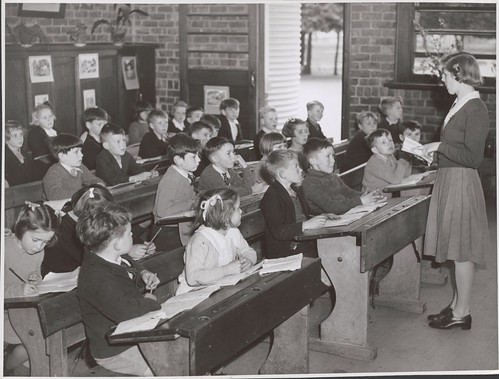During the Values: Self, Society and The Professions module, we took part in an eye opening workshop where the class was split into 4 groups and were given an envelope full of materials. When the envelope was placed onto our tables, we were told not to touch or have a look to see what was inside. After being told that by our class teacher Gillian, the urge to have a look inside became so intense we were all on the edge of our seats waiting until she said we could have a look like little school children.
When we were able to have a look, a girl in my group tipped the envelope over to find some paper, pens, paperclips, sticky notes and blue tac. We were then informed we had to create a masterpiece from the materials provided to help a brand new student starting at the University of Dundee. Assuming everyone else in the class had the same materials, we started discussing in my group what to make from what we had. We decided to create a poster which included a map and some useful information for getting around the university. When the time came to present our masterpieces to the class, only then did we realise there were some extra materials which the other groups had and we didn’t. I then thought to myself how was this fair when we all had the same task to do AND it was a competition? This thought didn’t bother me much until we got told we would be graded out of 10. My group got a grade of 3 out of 10 along with another group who received 2 out of 10 for their work. I was surprised at the result, due to the fact that I thought my group had worked much harder and would achieve more. The remaining 2 groups received an 8 and 9 out of 10 and even received prizes! How is that possible I thought to myself? Were we not good enough? Where did we go wrong? The other groups received more praise compared to us as well. It was then we realised the purpose of this activity and by how I felt I was well and truly surprised.
Being a teacher, it is very important to acknowledge the inequalities amongst the children in your setting. Those who cannot produce the work up to a great standard may be due to the limitation of resources they have at home, or the support that they receive. However, what should be noticed is the amount of effort being put into their work and how they have come about putting it together. Some children may have the skills for any task which they have been set however cannot carry it out due to their limitations. What we don’t realise is we may be sitting praising a child for the work they have created, however those with the same abilities and skills will be able to perform the same but are disadvantaged as they may not be receiving the right support at home. It is our duty as teachers to make sure we encourage every child in the classroom equally in order for them to produce the best work they can and praise all children for any work that they carry out. This way children will feel encouraged and they will then thrive to be the best they can be, rather than being pushed back and discouraged. Children’s self-esteem and confidence will also be boosted and it will help them develop further in their education.
This activity really got me thinking about the way some children may feel when they are treated differently and not equal to those around them, no matter how much effort they have put in, whether it be more or less or depending on their home situation. The feeling I felt when the other teams scored more, due to more resources when we put just about the same effort in as them really astonished me to the fact that some children do get treated and do feel this way in some places. It is now our opportunity as teachers to change this and make sure all children are treated equally and no different from one another.



